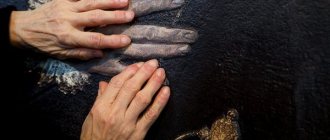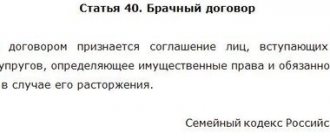We have already written about the uniqueness and protection of original content. Today we’ll take a closer look at how to protect your content from a legal point of view.
Theft of content (and copyrights to it) occurs all the time on the Internet. This cannot be avoided. Although no, there is still one way - not to publish anything at all. =)
Unfortunately, the content has been copied, is being copied and will continue to be copied.
And if it is impossible to prevent theft, then you can prepare to defend violated rights. So, in order.
A little tediousness: let's go over the articles of the Civil Code
Let me explain a little: the site (entirely), content from the site, photographs, pictures, videos - all this is subject to copyright.
But what does this beautiful formulation “creative work” mean? Every author who writes, photographs, draws, or comes up with a script, essentially has a mental process going on. He first comes up with an idea and then implements it. Mental processes prevail over physical ones, so this is creative work. If a person helps the author, for example, financially or assists in filming, then this is considered technical work, and in this case one cannot claim co-authorship. But if you give ideas, add to it or come up with something new, then please – you are a co-author.
And copyright in a work arises automatically at the moment of its creation.
Now let's figure out exactly what rights the author has. Traditionally, rights are divided into personal and property rights .
Also, the copyright holder may, at his own discretion, permit or prohibit other persons from using the result of intellectual activity. In this case, the absence of a prohibition is not considered consent/permission .
Note: the author and copyright holder are not always the same person. The author is the person whose creative work created the work. But the copyright holder can be either an individual or a legal entity. Since the law does not prohibit the alienation of rights in favor of other persons, the copyright holder has the exclusive right to the work.
Alienation of rights can be either in full or in part. And alienation occurs on the basis of a contract. For example, in the Service Agreement that we conclude with Customers, there is a clause that regulates relations in this area: “Exclusive rights to use the design, texts, illustrations and other materials developed in accordance with this agreement belong to the Customer (that is, the client) and are transferred to him after the Contractor (that is, us) completes the relevant work"
.
Subjects
Subjects.
The original holder of copyright is always the author, who can only be a citizen. However, according to previous legislation, in some cases legal entities (film studios, television studios, publishers of encyclopedias, etc.) were recognized as the original holders of copyrights; their copyrights remain in force to this day.
If a work is the result of the creativity of two or more authors, then all of them are considered co-authors. Co-authorship can be inseparable (if an indivisible object is created) or separate. The relationship of co-authors is determined by agreement between them.
Authors of dependent works (translator, processor, compiler) can use their copyright only if consent is received from the author of the main (original) work, for example from the original author.
And yet, how to protect yours?
Tip #1: Put some kind of copyright warning.
For example, ours looks like this:
And another option is possible: “All materials on this site are subject to copyright (including design). Copying, distribution or any other use of information and objects without the prior consent of the copyright holder is prohibited."
.
Tip #2: Put up a copyright sign
This is the inscription familiar to the eye: .
Tip #3: Watermark your photos
And it's better to have your name on the watermark. You can, of course, indicate a website, email or pseudonym, but if your copyright is violated, it will be more difficult to prove that the site/mail/alias belongs to you.
Note: if the watermark in the photograph has been cropped/retouched, then this is already a violation under a separate article of the Civil Code of the Russian Federation -.
Tip #4: Don't share your original photos with anyone.
As well as drafts/sketches of your works, etc. After all, all this is proof of YOUR authorship.
Tip No. 5. Record the authorship of the text
We even dedicated an article to this, you can read it here. Yandex.Webmaster allows the search engine to know that this text is yours. Which, accordingly, will reduce the likelihood of plagiarism.
Tip No. 6. Tell users about the release of new material
For example, highlight new blog articles via social media/newsletters. In other words, announce the release of your content, as we do =)) There are other advantages to this, for example, attracting traffic.
Tip No. 7. You can print out an article/website page/picture and have it certified by a notary
Of course, this will cost money. But the evidence will be indisputable.
There are also options for using scripts to prohibit copying/selecting text, adding a link to the source when copying. But these are options that are easy to work around (details in this article).
If it does happen...
There are two options for the development of events: pre-trial settlement of the conflict and trial, if the first option does not work.
Pre-trial conflict resolution
First, write a letter of complaint to the violator of your rights. Contacts can be found on the site where you saw your content. If the content was posted not on the website, but, for example, on a social network, then contact the resource administration immediately.
lists the requirements for completing an application (letter of claim).
And at the end of the statement, you can give the offender a little nightmare: “If this information is not removed from your site within 24 hours, we will file a statement of claim in court.”
.
Note: the application can be submitted in writing (sent by mail), or submitted electronically (scanned document). If the application is submitted by a person authorized by the copyright holder, then it is necessary to attach to the application a document that confirms these powers (for example, a power of attorney).
If it turns out that the site owner ignores your letter, then you still have the right to contact the hosting provider. To install a provider, you can use the service https://whois-service.ru/. And please note that when filing a claim with the hosting provider, you must have prepared evidence of your authorship.
We send a letter of claim/application to the hosting provider, but only without a threatening signature about going to court (requirements for the application can be found on the website of the hosting company).
There are also exceptions where the information intermediary will not be liable. I will list:
Trial
If the first option does not produce results, then we go to court. And here the difficulties begin... Let's figure it out.
1. If the offender (defendant) and the author (plaintiff) are individuals, then you will need to apply to a court of general jurisdiction either at the place of residence/location of the defendant, or (if the place of residence/location of the defendant is unknown) at the place of residence of the plaintiff.
2. If one of the parties to the conflict is a legal entity, then the claim will be filed with the arbitration court at the location of the violator (defendant).
3. Next, we draw up a statement of claim. The requirements for the statement of claim are listed in.
Well, this stage has been sorted out - let's move on. After the court makes an act (decision) in your favor and it comes into force , you need to send an application to Roskomnadzor (). All further actions of Roskomnadzor are listed
Copyright protection
Copyright protection.
Defense is carried out in court or arbitration court. The owner of exclusive copyright may demand that the violator stop the violation and compensate for the damages caused to him. Instead of collecting damages, the copyright owner may demand in his favor the income received by the infringer from the illegal use of copyright, or the payment of so-called legal compensation in the amount of up to 50,000 minimum monthly wages. The specific amount of this compensation is established by the court.
In addition, the owner of exclusive copyright may demand either the destruction of all copies of a work made illegally or the transfer of these copies to him.
A little practice
I will give you a couple of examples of disputes over the protection of intellectual property.
With Alyonka everything is sweet and smooth
Dispute between OJSC Moscow Confectionery Factory “Red October” and CJSC “Confectionery Factory “Slavyanka”, which is associated with the brands of chocolates “Alenka” and “Alina”. It was about the design of the chocolate packaging.
“Red October” demanded compensation of more than 310 million rubles (!!!) from “Slavyanka” for violation of exclusive rights to a trademark. According to Red October, Slavyanka produced Alina chocolate, the design of which is “confusingly similar to the label of Alenka chocolate.”
.
A representative of “Red October” even presented to the court a study by VTsIOM, which found that “Alenka” and “Alina” chocolates are perceived “as products from the same manufacturer’s line
.
The proceedings ended with the signing of a settlement agreement: “Slavyanka” undertook to stop producing chocolate bars in the controversial design, and also to pay “Red October” 15 million rubles.
And again about treats
In 2007, the Ferrero group filed a claim with the Moscow Arbitration Court for violation of the exclusive right to a trademark protecting the appearance of Raffaello sweets. The defendants in the lawsuit were Landrin CJSC and the retail trade enterprise Chakuba LLC (Moscow). The company Soremartek SA (part of Ferrero) has registered a trademark in its name, which is a realistic image (photograph) of a white spherical candy with an uneven surface - sprinkled with coconut flakes.
As a result of the legal proceedings, all four instances of the arbitration system confirmed Ferrero’s exclusive right to the Raffaello brand.
Your song is sung
But here is a very interesting story about how the protection of intellectual rights works outside of Russia:
“Happy birthday to you” - which of us has not sung these words at least once in our lives as a birthday greeting? =) But the commercial performance of this song without royalties to the copyright holder is prohibited in the USA. That is why you rarely see this song, for example, in American films (because it is expensive). The song was written by sisters Patty and Mildred J. Hill (they wrote the song in 1893). The rights to the song were transferred to the sisters' relatives. Officially, the copyright for the song “Happy birthday to you” was registered in 1935 and, according to US law, will expire by 2030.
You will find even more similar stories in the following sources:
- Review of judicial practice in cases related to the resolution of disputes on the protection of intellectual rights, approved by the Presidium of the Supreme Court of the Russian Federation on September 23, 2015.
- Review of judicial practice on some issues of the application of copyright rules by courts
Here are various controversial situations and solutions to them.
What protection methods are used
Depending on what you want to achieve, you must choose the method in which you will defend yourself. It must be said that the first tasks of the author of anything are to preserve all kinds of original working materials and secure priority.
Therefore, you need to start protecting your rights even before you start using your creation.
Preliminary
There are several options for recording authorship and other rights ownership:
- Send the work to yourself by mail (regular or electronic mail). In the first case, the envelope cannot be opened until a possible trial. In the second, it is recommended to send an email directly from the browser.
- Make an entry in the registry appropriate to the nature of your creation. There are many of them, all of them are non-state, except where they record the data of the creators of computer programs. But even that is not mandatory, but optional.
- Record the existence of the work and the name of the author notarially. Notaries are reluctant to do this, since there is no unified register in the country, and they are responsible for certification in their own name. Experienced people advise saying that such certification is required, for example, under an agreement with a publishing house, and not to fix the rights of the author. If you persuade, you will be provided with reinforced concrete evidence for the court.
On the Internet, the most basic thing is to put the protection badges provided by the Civil Code © (authors) and ℗ (“adjacent partners”) with the name and date of publication. They, of course, will not protect your notes, photos and other materials from theft. But if this icon is deliberately deleted during copying, then this will aggravate the guilt of the one who does this.
The law (Articles 1299 and 1309 of the Civil Code) also allows the use of any technical means that protect access to works. These may be technologies or devices that control or limit activities that are prohibited by the copyright holder. You can read more about how to pre-protect intellectual property rights in this article.
Extrajudicial
Let's be honest: contacting the offender, be it a person or an organization that knowingly used your work, is ineffective. This method will only work if the offender did not know that he was taking someone else’s property and is ready to correct himself.
You can write a letter of claim; it is drawn up like a statement of claim. The addressee will be either an individual or a creative association or organization.
The main purpose of such a letter is to notify the offender that you are aware of what has been done and are ready to defend your interests.
It is unlikely to frighten the mass distributor of counterfeit goods, but it may help solve local problems. Let's say, stop performing music or using text without the author's consent.
Sometimes the courts will require you to try to settle the case amicably, but this is your right, not your responsibility. It’s up to you to decide whether to write such a petition or immediately sue the offender.
Going to court
If someone appropriated the result of your creativity and published it before you, then, by law, he is considered the author - until you prove otherwise. Therefore, everything will be useful in court: drafts, sketches, negatives and those preliminary measures that you took to protect your intellectual rights.
The claim may be:
- administrative (for minor violations such as an error in the author’s name);
- general civil (in most situations);
- criminal (in case of obvious plagiarism, with a large amount of damage or as part of a criminal case).
General civil claims are heard in district courts. Or in arbitration, when the violator, the copyright holder, or both at once are an individual entrepreneur or a legal entity, or if the dispute is of a commercial nature. If the case is not limited to the first instance, then it will be dealt with by a special court for intellectual rights.
The fee for non-property claims (recognize/restore authorship, etc.) for citizens is 300 rubles. And if you have material claims against the violator, then the calculation is carried out depending on their size: minimum 400 rubles, maximum 60,000 rubles.
The application is considered for about a month, and then the process begins. Its outcome is highly dependent on the validity of the claims, the correctness of the calculation of damages or the adequacy of the compensation required, as well as the strength of the evidence.
A specialist in copyright and related rights found in our marketplace will help you decide on the method of protection and write a competent application. Compared to other similar services, ours has advantages:
- in the application you yourself indicate the price for the service, and only those who agree to it will answer you;
- after agreeing on the final price with the selected lawyer, it will not change;
- your money will be sent to the contractor only after the work is completed, and before that it will be reserved.
It’s easy to create an application with us - the form is convenient, and it contains tips. We are always in touch and will support you at all stages.
Sources:
Copyright (Chapter 70 of the Civil Code of the Russian Federation)
Rights related to copyright (Chapter 71 of the Civil Code of the Russian Federation)
On the application of copyright (Decree of the Supreme Court No. 10 of April 23, 2019)








